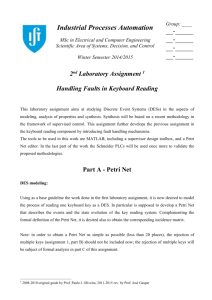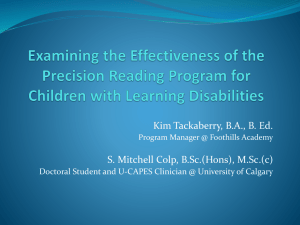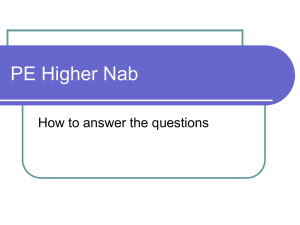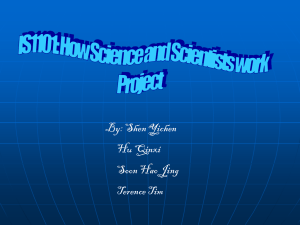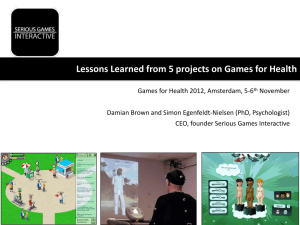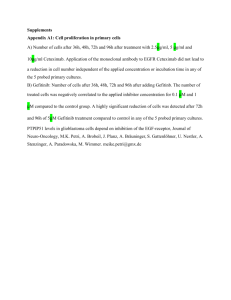API_LAB2_B_1516
advertisement
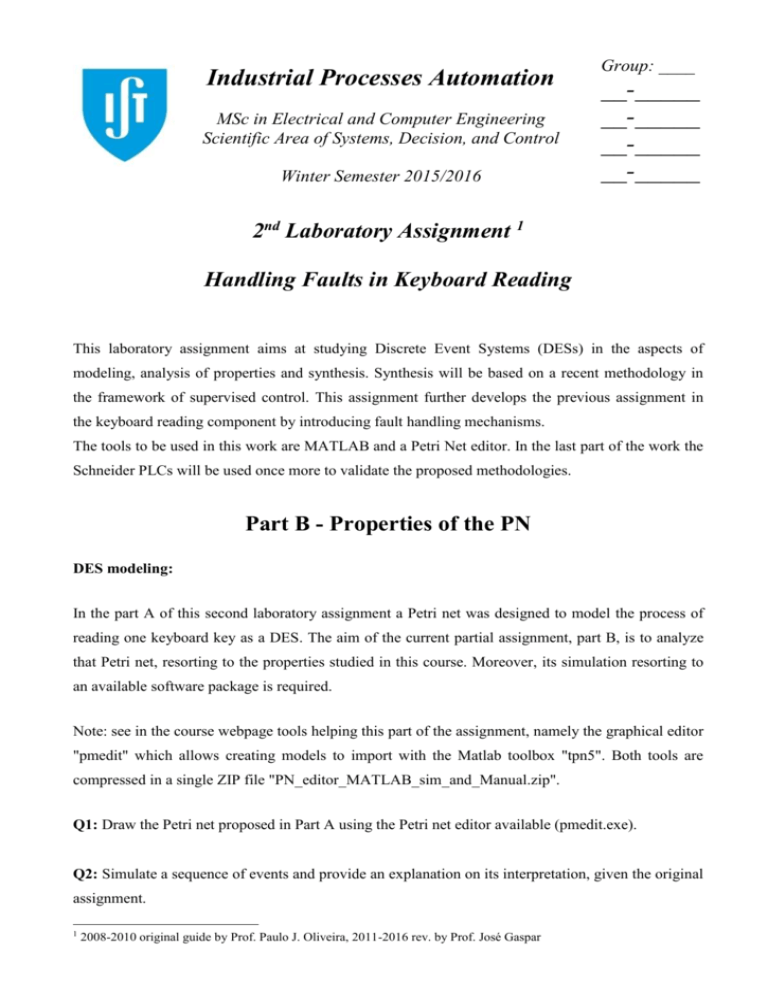
Industrial Processes Automation MSc in Electrical and Computer Engineering Scientific Area of Systems, Decision, and Control Winter Semester 2015/2016 Group: ____ __-_____ __-_____ __-_____ __-_____ 2nd Laboratory Assignment 1 Handling Faults in Keyboard Reading This laboratory assignment aims at studying Discrete Event Systems (DESs) in the aspects of modeling, analysis of properties and synthesis. Synthesis will be based on a recent methodology in the framework of supervised control. This assignment further develops the previous assignment in the keyboard reading component by introducing fault handling mechanisms. The tools to be used in this work are MATLAB and a Petri Net editor. In the last part of the work the Schneider PLCs will be used once more to validate the proposed methodologies. Part B - Properties of the PN DES modeling: In the part A of this second laboratory assignment a Petri net was designed to model the process of reading one keyboard key as a DES. The aim of the current partial assignment, part B, is to analyze that Petri net, resorting to the properties studied in this course. Moreover, its simulation resorting to an available software package is required. Note: see in the course webpage tools helping this part of the assignment, namely the graphical editor "pmedit" which allows creating models to import with the Matlab toolbox "tpn5". Both tools are compressed in a single ZIP file "PN_editor_MATLAB_sim_and_Manual.zip". Q1: Draw the Petri net proposed in Part A using the Petri net editor available (pmedit.exe). Q2: Simulate a sequence of events and provide an explanation on its interpretation, given the original assignment. 1 2008-2010 original guide by Prof. Paulo J. Oliveira, 2011-2016 rev. by Prof. José Gaspar Q3: Discuss the properties that the proposed Petri net should verify and order the importance of those properties in the table below. Order of importance 1 Property 2 3 4 5 6 7 Q4: Study property #1, resorting to the methods studied in the course. Q5: Study property #2, resorting to the methods studied in the course. Q6: Study property #3, resorting to the methods studied in the course. Q7: Study property #4, resorting to the methods studied in the course. Q8: Study property #5, resorting to the methods studied in the course. Q9: Study property #6, resorting to the methods studied in the course. Q10: Study property #7, resorting to the methods studied in the course. Q11: Discuss how to study those same properties, in the case that the modeling tool would be GRAFCET. Q12: [Change the priority of transitions] In the Petri net simulator used in the laboratory, conflicting transitions are prioritized by their identification numbers: the transition with the lowest number is the one selected to be fired. Let D- and D+ denote the preconditions and pos-conditions matrices, and let q denote a firing vector. Describe how to obtain a new Petri net characterized by D2 f1 ( D ) , D2 f 2 ( D ) and q2 f 3 (q) such that the original effects of transitions are kept but q2 has the desired priorities. Make a small Matlab demo illustrating the changing of the matrices and firing vector, such that one of the transitions is given priority in case of conflict. Suggestion: add a transition reordering option to function PN_sim.m and add code implementing f1(), f2() and f3(), such that the internal function PN_state_step() does not need to be changed.
